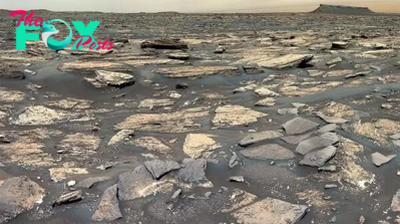Science
There's an asteroid out there worth $100,000 quadrillion. Why haven't we mined it?
On Oct. 13, 2023, NASA launched a mission to 16 Psyche, a large, metal-rich asteroid about six years away, to learn more about how planetary interiors form.
The asteroid has a jaw-dropping estimated monetary value: $100,000 quadrillion. That's because 16 Psyche is a literal goldmine, packed with rare elements essential to cars and electronics, like platinum and palladium.
To explore — and perhaps settle — space, we'll need extraterrestrial sources of materials. Companies such as AstroForge and TransAstra are already looking into building mines on asteroids like Psyche. But how close are we to mining them and reaping their cosmic treasures?
Technologically speaking, we're pretty close, said Philip Metzger, a planetary physicist at the University of Central Florida. The only difference between mining on an asteroid versus on Earth is the need for equipment that can withstand low-gravity, high-radiation conditions. The equipment also needs to be able to function autonomously — it could take 20 minutes or more for a radio wave with instructions to reach an asteroid, especially if it's on the other side of the sun.
Related: Undiscovered 'minimoons' may orbit Earth. Could they help us become an interplanetary species?
All that technology has already been developed and tested in a laboratory setting, but it's not quite ready for implementation, Metzger said. On NASA's Technology Readiness Levels scale, which ranges from 1 to 9, our current equipment for space mining sits between a 3 and a 5.
"The technologies need to be advanced — about a 6 to 7 — before we're ready to start building a flight mission," Metzger told Live Science. "What's lacking right now is funding." If all that money poured in now, we might see small-scale asteroid mining in five years, Metzger added.
Any progress toward asteroid mining will likely come from the private sector, said Kevin Cannon, an assistant professor of geology and geological engineering at the Colorado School of Mines' Space Resources Program. But there's at least one potential obstacle: explaining to potential investors why we should mine asteroids in the first place.
It's a fair question. Bringing materials back to Earth is "economically dubious," Cannon told Live Science. It would be extraordinarily expensive to do so, and platinum group metals are actually declining in price. But asteroids might be an important source of material for development in space, he added.
"So, for example, if we extracted water from [a] water-rich asteroid, we could split that apart into hydrogen and oxygen, and use that as rocket propellant to refuel spacecraft," Cannon said. Metals mined from asteroids, meanwhile, could be transformed into large structures in space.
Related: 'Stepping stone to Mars': Minimoons may help us become an interplanetary species, says MIT astrophysicist Richard Binzel

That raises another question: Why not just mine the moon? All of the materials we'd want to mine from asteroids also exist there, albeit in lower concentrations. And, of course, it's much closer.
The benefit of the moon is, it's just days away, Cannon said. "Even these near-Earth asteroids that people talk about, if you consider how long it takes to wait for the orbits [between the asteroids and Earth] to line up, which you need to get back, it's many hundreds of days." Psyche, with its $100,000 quadrillion bounty, will take years to reach, with first contact estimated to occur in 2029.
Even if we aren't ready to mine asteroids, scientists are still interested in exploring these space rocks. Less than a month before the Psyche mission launched, NASA's OSIRIS-REx spacecraft returned from its mission to the asteroid Bennu, with samples in tow. In 2020, the Japanese spacecraft Hayabusa2 returned with samples from the asteroid Ryugu, before taking off to explore two other asteroids: 2001 CC21 and 1998 KY26. And in October, the European Space Agency will launch a mission to the asteroid Hera.
—'The law is way behind the time': Mining asteroids and the moon remains a huge legal gray area
—Can we refuel 'dead' satellites in space? Bold new missions aim to try.
— Space mining could ruin our solar system if we don't establish protected places now, researchers warn
None of these missions are focused explicitly on mining. The research goals of both OSIRIS-REx and Hayabusa2 included developing a better understanding of ancient Earth's geology and chemistry, while Hera is investigating planetary defense Technology.
"There's no magic technology that we have to invent to mine asteroids. We have the technology," Cannon said. "It's a matter of having the will to do so and putting the capital towards doing it."
-
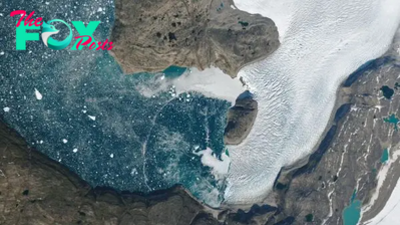
 Science18h ago
Science18h agoEarth from space: Mysterious wave ripples across 'galaxy' of icebergs in Arctic fjord
-

 Science1d ago
Science1d ago'We're meeting people where they are': Graphic novels can help boost diversity in STEM, says MIT's Ritu Raman
-
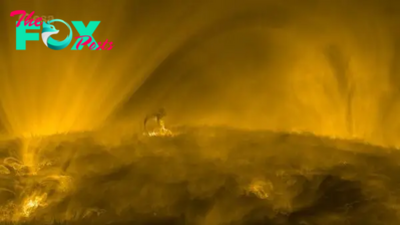
 Science1d ago
Science1d agoSpace photo of the week: A planet-size explosion rocks the sun's 'mossy' corona
-

 Science2d ago
Science2d agoChina launches Chang'e 6 sample-return mission to moon's far side
-

 Science2d ago
Science2d agoWe Still Don’t Fully Understand Time
-
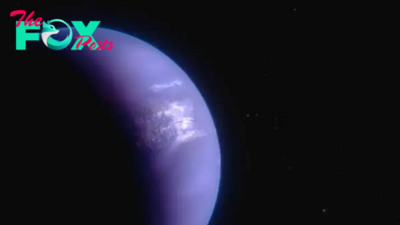
 Science3d ago
Science3d agoJames Webb telescope spots wind blowing faster than a bullet on '2-faced planet' with eternal night
-
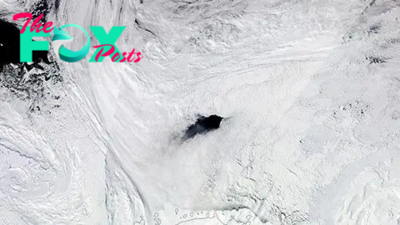
 Science3d ago
Science3d agoAntarctic ice hole the size of Switzerland keeps cracking open. Now scientists finally know why.
-
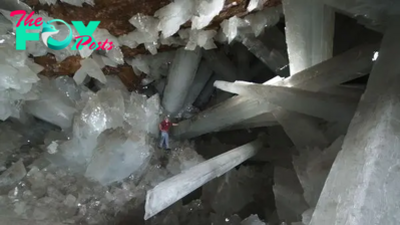
 Science3d ago
Science3d agoCave of Crystals: The deadly cavern in Mexico dubbed 'the Sistine Chapel of crystals'




